
How to Use PCA9685 16*12 Bit: Examples, Pinouts, and Specs
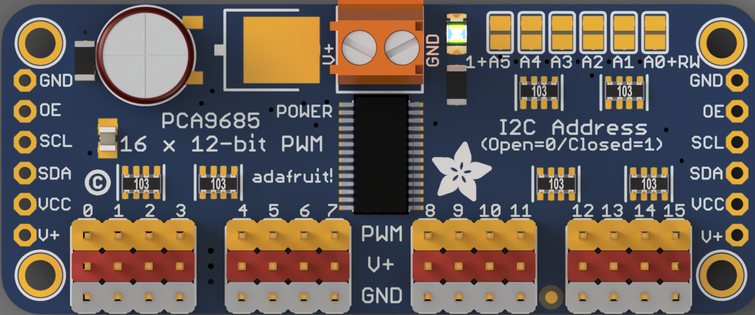
 Design with PCA9685 16*12 Bit in Cirkit Designer
Design with PCA9685 16*12 Bit in Cirkit DesignerIntroduction
The PCA9685, manufactured by Adafruit, is a 16-channel, 12-bit PWM (Pulse Width Modulation) controller designed for precise control of servos, LEDs, and other devices requiring PWM signals. It communicates via the I2C protocol, making it easy to integrate with microcontrollers like the Arduino UNO. This component is widely used in robotics, automation, and lighting projects where multiple PWM outputs are needed without consuming significant microcontroller resources.
Explore Projects Built with PCA9685 16*12 Bit
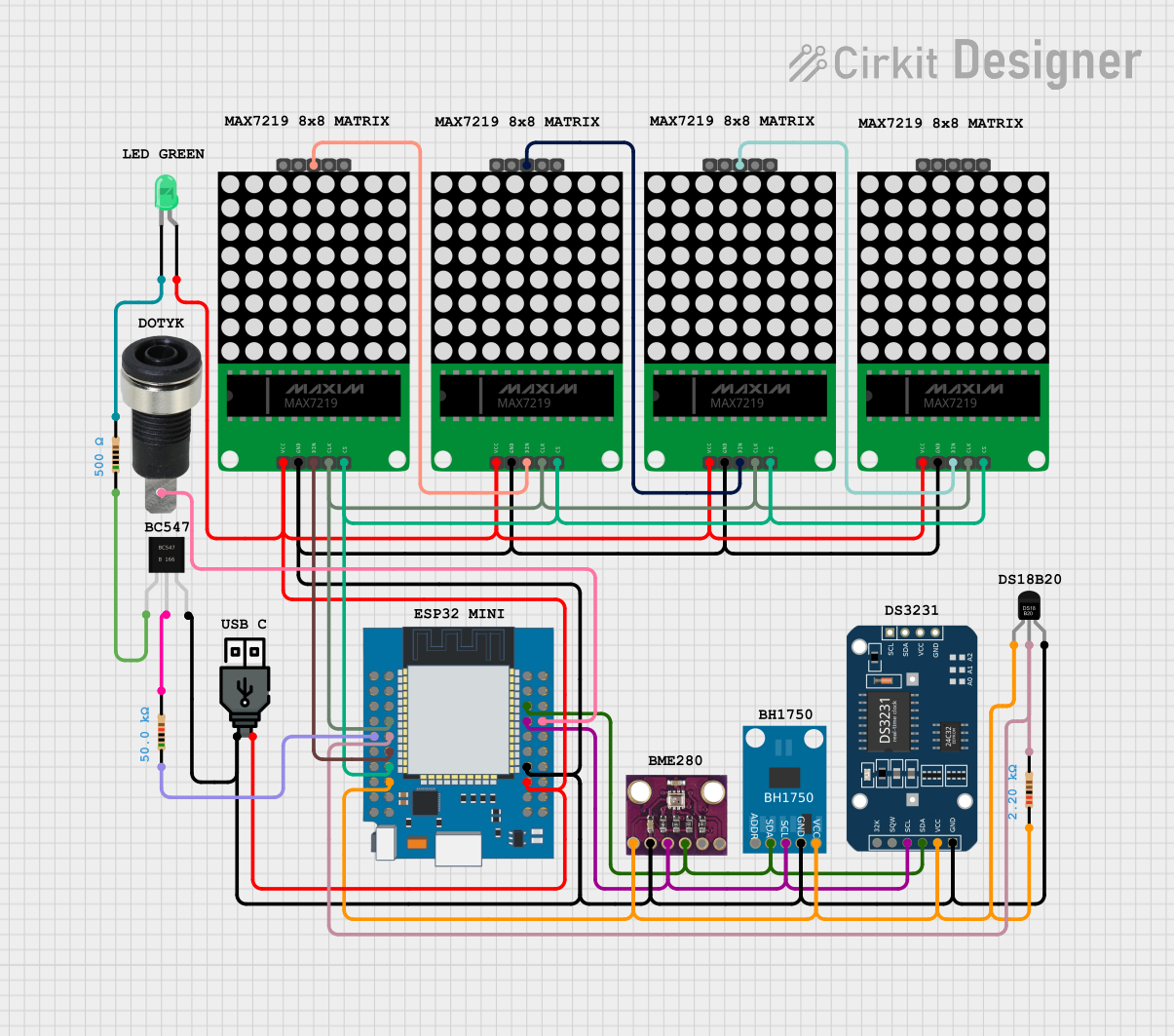
 Open Project in Cirkit Designer
Open Project in Cirkit Designer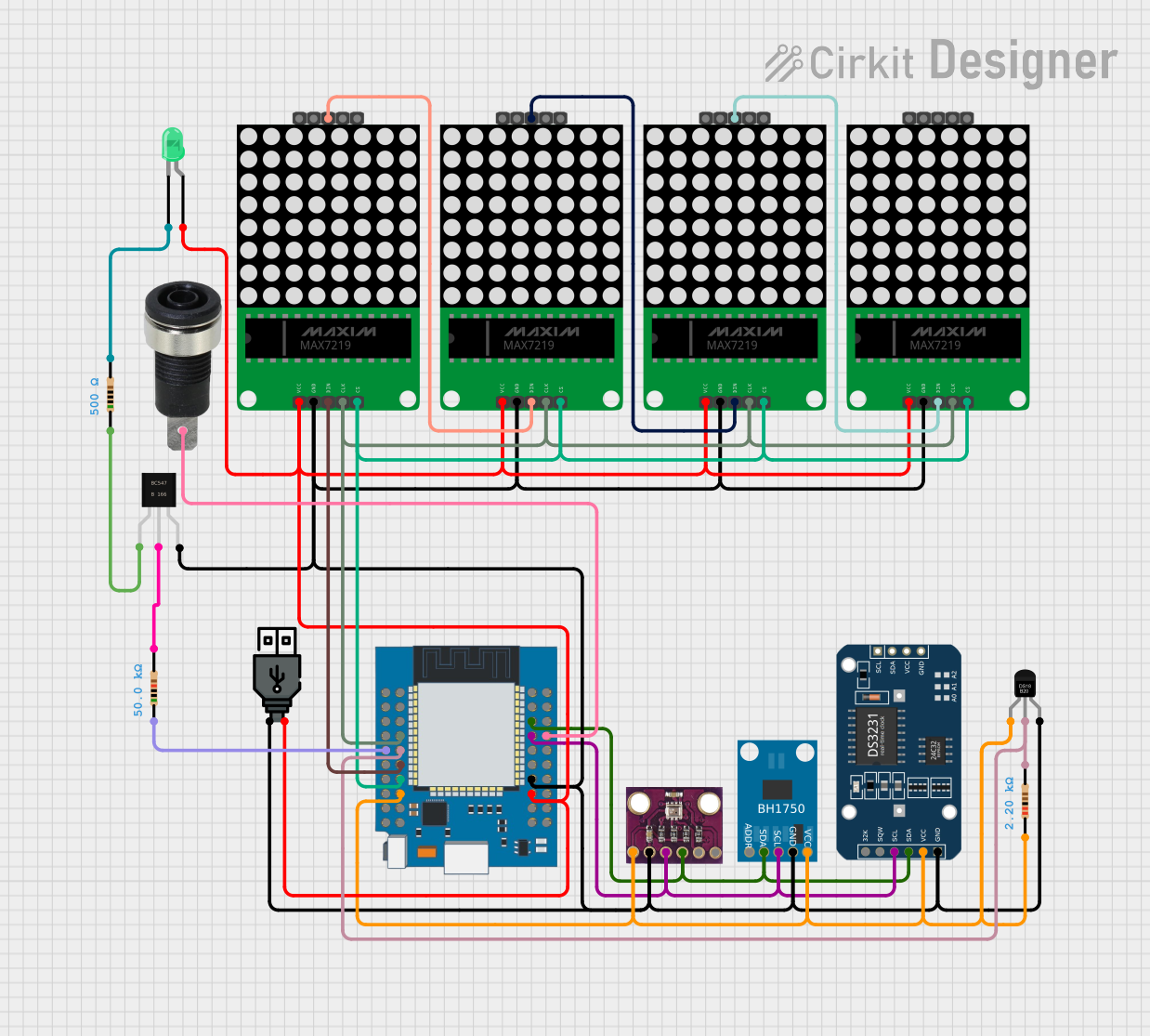
 Open Project in Cirkit Designer
Open Project in Cirkit Designer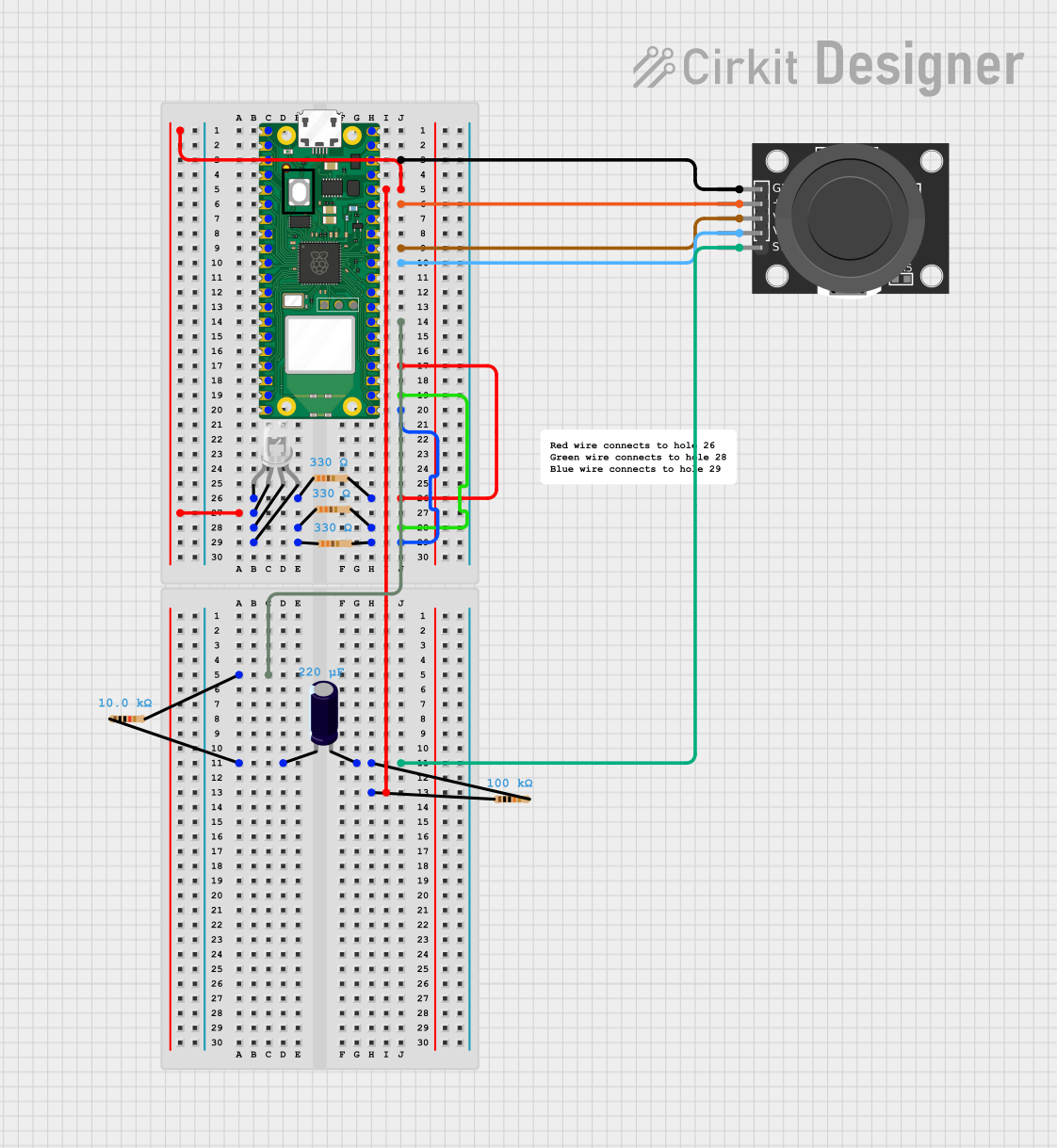
 Open Project in Cirkit Designer
Open Project in Cirkit Designer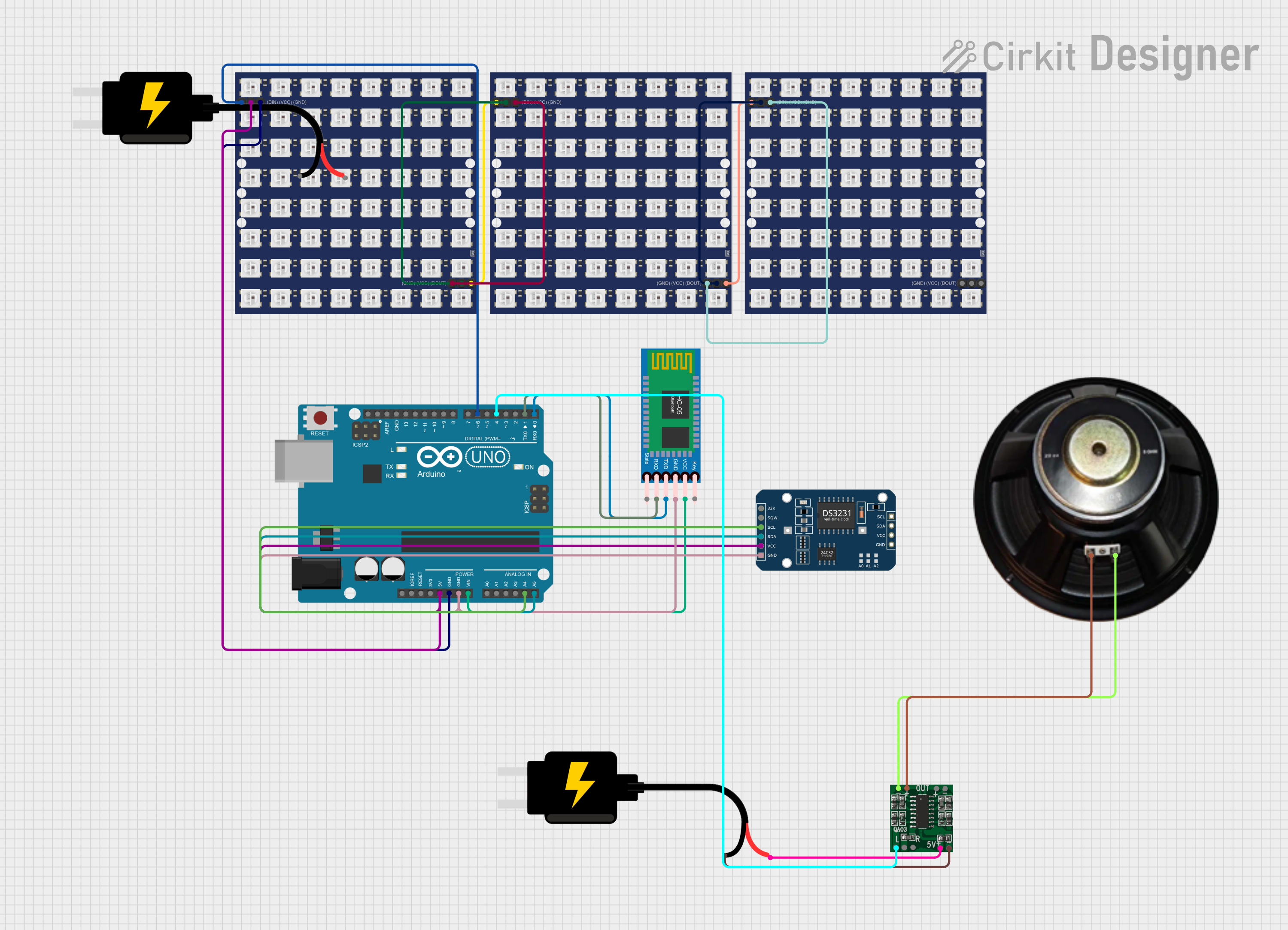
 Open Project in Cirkit Designer
Open Project in Cirkit DesignerExplore Projects Built with PCA9685 16*12 Bit

 Open Project in Cirkit Designer
Open Project in Cirkit Designer
 Open Project in Cirkit Designer
Open Project in Cirkit Designer
 Open Project in Cirkit Designer
Open Project in Cirkit Designer
 Open Project in Cirkit Designer
Open Project in Cirkit DesignerCommon Applications
- Controlling multiple servo motors in robotic arms or drones
- LED dimming and lighting effects in decorative or functional lighting systems
- Motor speed control in automation projects
- Signal generation for devices requiring PWM inputs
Technical Specifications
The PCA9685 is a versatile and powerful PWM controller. Below are its key technical details:
Key Technical Details
- Channels: 16 independent PWM outputs
- Resolution: 12-bit (4096 steps per channel)
- Communication Protocol: I2C (up to 1 MHz)
- Operating Voltage: 2.3V to 5.5V
- Output Voltage: Up to 6V (external power supply required for higher voltages)
- Output Current: 25mA per channel (maximum)
- Frequency Range: Adjustable from 24 Hz to 1526 Hz
- Addressing: Configurable I2C address (up to 62 devices on the same bus)
- Operating Temperature: -40°C to +85°C
Pin Configuration and Descriptions
The PCA9685 module typically comes with 18 pins. Below is the pinout description:
| Pin Name | Type | Description |
|---|---|---|
| VCC | Power Input | 2.3V to 5.5V power supply for the PCA9685 logic. |
| GND | Ground | Ground connection. |
| SDA | I2C Data Line | Serial data line for I2C communication. |
| SCL | I2C Clock Line | Serial clock line for I2C communication. |
| OE | Input (Active Low) | Output enable pin. Pull low to enable PWM outputs, high to disable. |
| PWM 0-15 | PWM Outputs | 16 PWM output pins for controlling servos, LEDs, or other devices. |
| V+ | Power Input | External power supply for driving servos or LEDs (up to 6V). |
| A0-A5 | Address Pins | Configurable I2C address pins (used to set the I2C address of the module). |
Usage Instructions
The PCA9685 is straightforward to use in a circuit, especially when paired with an Arduino or similar microcontroller. Below are the steps and best practices for using the component:
Connecting the PCA9685
- Power the Module: Connect the VCC pin to the 3.3V or 5V output of your microcontroller. Connect the GND pin to the ground of your circuit.
- I2C Communication: Connect the SDA and SCL pins to the corresponding I2C pins on your microcontroller. For an Arduino UNO, connect:
- SDA to A4
- SCL to A5
- External Power Supply: If driving servos or high-power LEDs, connect an external power supply (up to 6V) to the V+ pin. Ensure the ground of the external power supply is connected to the module's GND.
- Address Configuration: If using multiple PCA9685 modules, configure their I2C addresses using the A0-A5 pins.
Example Code for Arduino UNO
Below is an example of how to use the PCA9685 with an Arduino UNO to control a servo motor:
#include <Wire.h>
#include <Adafruit_PWMServoDriver.h>
// Create an instance of the PCA9685 driver
Adafruit_PWMServoDriver pwm = Adafruit_PWMServoDriver();
// Define the servo parameters
#define SERVOMIN 150 // Minimum pulse length for the servo
#define SERVOMAX 600 // Maximum pulse length for the servo
void setup() {
Serial.begin(9600);
Serial.println("Initializing PCA9685...");
// Initialize the PCA9685 module
pwm.begin();
pwm.setPWMFreq(50); // Set PWM frequency to 50 Hz for servos
}
void loop() {
// Sweep the servo from minimum to maximum position
for (uint16_t pulselen = SERVOMIN; pulselen < SERVOMAX; pulselen++) {
pwm.setPWM(0, 0, pulselen); // Set PWM on channel 0
delay(10); // Small delay for smooth movement
}
// Sweep the servo back from maximum to minimum position
for (uint16_t pulselen = SERVOMAX; pulselen > SERVOMIN; pulselen--) {
pwm.setPWM(0, 0, pulselen); // Set PWM on channel 0
delay(10); // Small delay for smooth movement
}
}
Best Practices
- Use decoupling capacitors near the VCC and V+ pins to stabilize the power supply.
- Avoid exceeding the maximum current rating of 25mA per channel.
- Use a level shifter if your microcontroller operates at 3.3V and the PCA9685 is powered at 5V.
- Ensure proper grounding between the PCA9685, microcontroller, and external power supply.
Troubleshooting and FAQs
Common Issues and Solutions
No Response from the PCA9685
- Cause: Incorrect I2C wiring or address mismatch.
- Solution: Verify SDA and SCL connections. Check the I2C address using a scanner sketch.
Servos or LEDs Not Responding
- Cause: Insufficient power supply or incorrect PWM frequency.
- Solution: Ensure the external power supply is adequate. Set the correct PWM frequency for your application.
Overheating
- Cause: Exceeding the current rating of the module.
- Solution: Limit the current draw per channel to 25mA or use external drivers for high-power devices.
Flickering LEDs
- Cause: Unstable power supply or incorrect PWM settings.
- Solution: Add decoupling capacitors and verify the PWM frequency.
FAQs
Q: Can I use the PCA9685 with a Raspberry Pi?
- A: Yes, the PCA9685 is compatible with the Raspberry Pi via the I2C interface.
Q: How many PCA9685 modules can I connect to a single I2C bus?
- A: Up to 62 modules can be connected by configuring unique I2C addresses using the A0-A5 pins.
Q: What is the maximum voltage I can use for the V+ pin?
- A: The V+ pin supports up to 6V for driving servos or LEDs.
Q: Can I control DC motors with the PCA9685?
- A: Yes, but you will need an external motor driver to handle the higher current requirements of DC motors.
By following this documentation, you can effectively integrate the PCA9685 into your projects for precise and reliable PWM control.